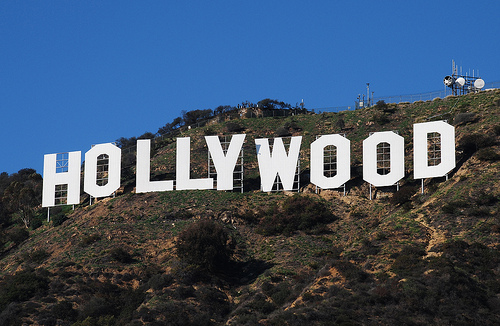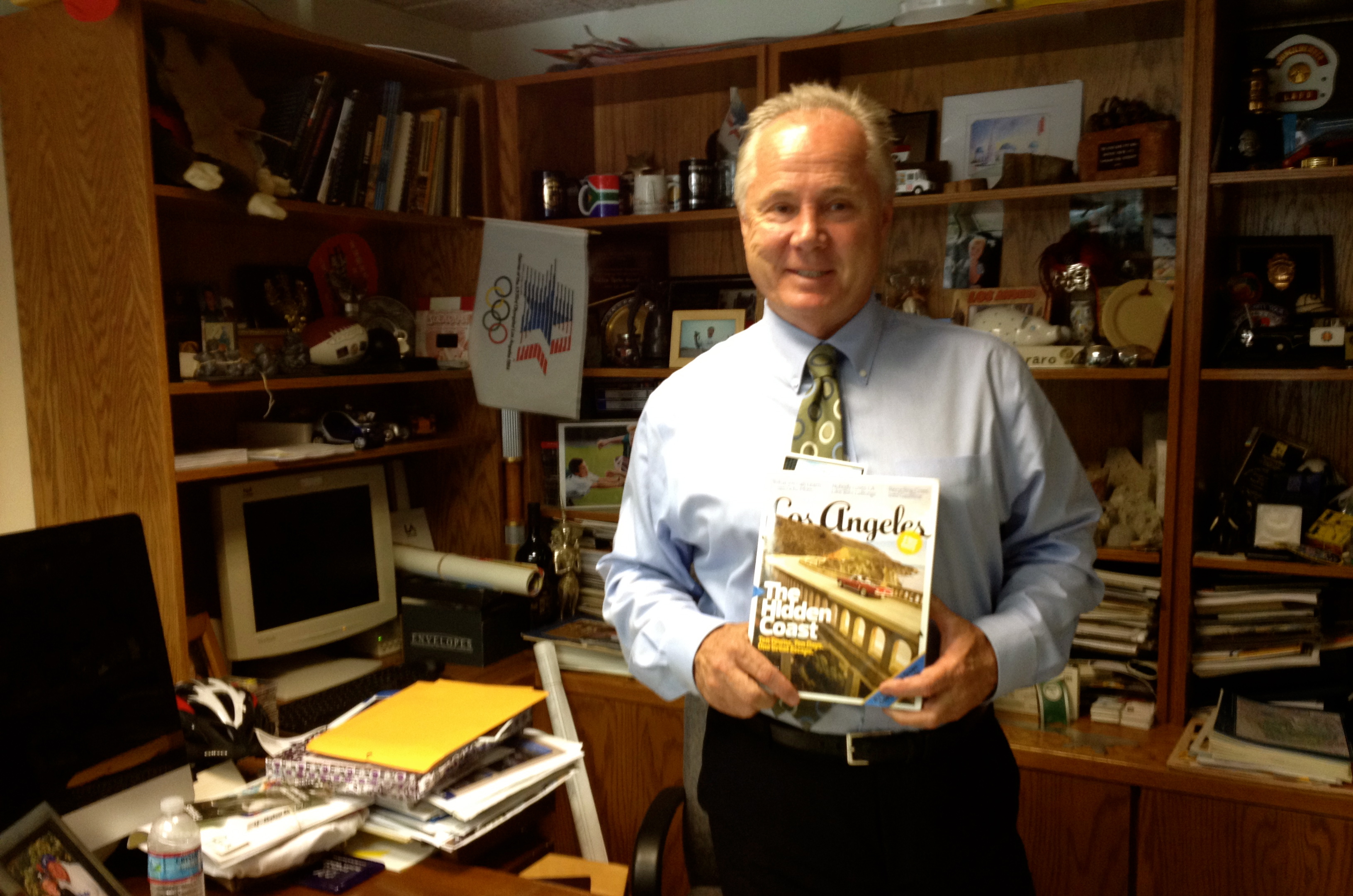A Day On Set
US Film Tax Incentives - California State Comparison

The infamous Hollywood sign that marks a film capitol and industry of the world. The sign was originally built in 1923 and read "Hollywoodland" and then was restored in 1978 as "Hollywood". The sign is thought to represent a world wide metaphor of "This is a place where anything is possible, where dreams come true,".
Blame it on Canada. Ever since our neighboring country started attracting film companies to shoot on it’s terrain in the late 90’s, Hollywood’s entertainment industry has been waning.
Canada’s economic growth, built by offering tax incentives and low production costs to film companies, represented as a smart business model to the U.S. and essentially started an arms race. States across the U.S. followed suit, enticing Los Angeles based companies to shoot on their land and enabling Hollywood’s demise.
“The best Hollywood was in ’96, since then it’s been a gradual decline until the point of less than half of what we used to produce here in L.A. is being produced today,” said Philip Sokoloski, Vice President of Communications at FILM LA.
As of today there are 37 U.S. sates offering tax incentive programs.
“For California, it’s not so much that any one competitor is eating our lunch, it’s a death by a thousand cuts,” said Sokoloski.
And for a producer whose job depends on making more money in the box office than fronted in production, flying a film crew across the states for cheaper costs (20 to 40 percent tax savings in some cases) is a hard to resist deal. Plus, the digital age has provided for some advances in film technology making it easier for production crews to transport equipment out of state.
“The trend of runaway production is not slowing. Essentially, California doesn't have a tax incentive to match other states. Louisiana is the new Michigan, which was the new New Mexico, which was the new Canada,” said Aaron Grice, sound operator for ABC Family.
But what about the report issued from Film LA that reads an 18 percent increase in film permits over the same time in 2012? Sokoloski notes there is reason to analyze the apparent growth before the industry gets overly confident.
“We were expecting to see loses as we saw loses all in 2012, and here we are gifted with this increase in the first quarter. Well, we took a look into it, and something like 43% of the number was still photography permits,” said Sokoloski.
Still photography has a far smaller impact economically since there are far fewer jobs required for those shoots. While filming makes up a huge piece of the economic pie in Los Angeles.
“For every one job in Los Angeles that is generated by film production, another 2.7 jobs are indirectly tied to that job, so when you take that number and multiply it out, that is about a half a million people in the L.A. area,” said Sokoloski.
From sound technicians to caterers to extras, many entertainment industry workers struggle to find work for their trade craft skills.
“All my friends were like, ‘why are you going to Hollywood?! Television is here!’,” said actress Crystal Mule, recently re-located to L.A. from Louisiana. “I didn’t imagine it was going to be this hard,” she continued.
As for the increase in pilot season, there is one key factor to consider; there has was an increase in pilots in the overall market (largely content driven), not just in L.A. However, L.A. shares a small part of those produced. In fact, according to Sokoloski, there has been a decrease in LA’s market share of pilots.
“This is dangerous for us because if the pilots get a taste of what it’s like to work in these other jurisdictions they just might stay to film the series. That’s a long term problem for Los Angeles to solve,” said Sokoloski.
Some in the L.A. entertainment industry, in effort to find work, are picking up stakes and moving out of state to New Mexico or New York, and increasingly the southern states, like Atlanta and Louisiana. And for those who make the commute across to states for months at a time, create the challenge of splitting up families.
“I got a cousin in working in Atlanta as a film maker and a bother that’s working in South Carolina as a film maker. I’d love to have them home, because there is nothing like family,” said Tom La Bonge, L.A. City Councilman representing district four, which includes Hollywood and Universal Studios.
The entertainment industry pumps 38 billion dollars into the economy and provides thousands of jobs to Angelenos, keeping production here is just as important to the city government as it is to filmmakers. Los Angeles City Government has made efforts to support Hollywood production. A few years ago, the city started offering film permit waivers for films being shot on city property. Almost all city properties participated, including city hall itself.
“Hello? Yes the observatory? I got a film crew here they need two days! Thank you!,” La Bonge said as he hung up a fake call, “See? It’s that easy”.
But after time, these favors proved to not be big enough to cause a spike in production. According to both Sokoliski and La Bonge, it all boils down to the state taking a stand.
“Sacramento needs to create new incentives or expand the ones that exist now, so California can be a key player in a growingly competitive market,” said Sokoloski.
But part of the problem is that there are many big money making industries in California all fighting for tax incentives from the capitol. For example, the film industry is competing against the agriculture industry and the aviation industry for state financial support.
“Some California companies are asking, why not give money to internet start ups? Or to the produce growing towns? It’s competitive!,” said La Bonge.
In 2009 the state finally introduced the California Film and Tax Credit. Where the state offered tax credits to feature films being made with a budget of 75 million or less. When the tax credit was enacted, there was a 25 percent growth in film production in California. But comparatively, this still was not enough to compete with other states. California gives less than 1/4th of what New York allocates for film production.
Plus, the big feature films Hollywood wants to lure back, providing for the jobs and economic incentives needed, have a far larger budget than 75 million, films like, “Star Wars Into Darkness”.
Then there are feature films, which continually find cheaper opportunities to film outside of L.A. Even movies that take place in Los Angeles will go out of state to film. Just these past few years, "Battle Los Angeles" was filmed in Louisiana and a stand in was built for the Santa Monica Pier. “Rock of Ages” was filmed in Florida and rebuilt the Hollywood Sign and part of the Sunset Strip.
“So the message that is coming from Sacramento is that if you really want to do a big motion picture, do it outside California, because we are not really interested in helping you here,” said Sokoloski.
Sokoloski said that with the partnership of the city government and Film LA, they aim to change that message by advocating for an expansion of the credit, demanding for larger film budget guidelines.
Just this year, the LA City Council passed a pilot fee waiver that would waive various personnel fees for pilots being shot in Los Angeles. However, the city won’t be able to measure the effects until next year. More than likely, more will need to be done by the state.
“California really needs to compete for this business, it’s an industry gone global and we can’t take for granted the fact the industry thrived and flourished here for 100 years. Right now, film and television production is being made outside of California for financial reasons, not for creative ones,” said Sokoloski.





